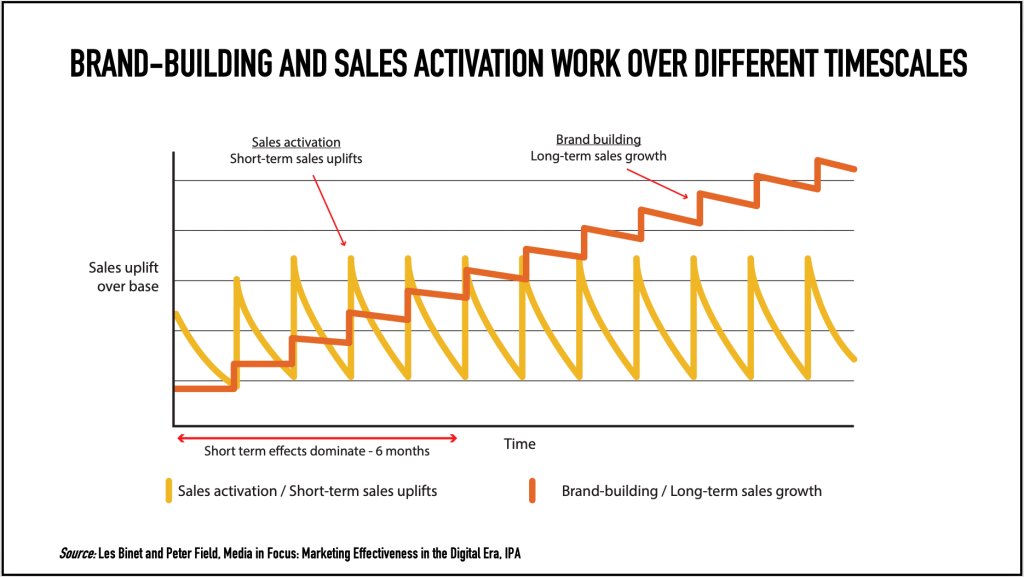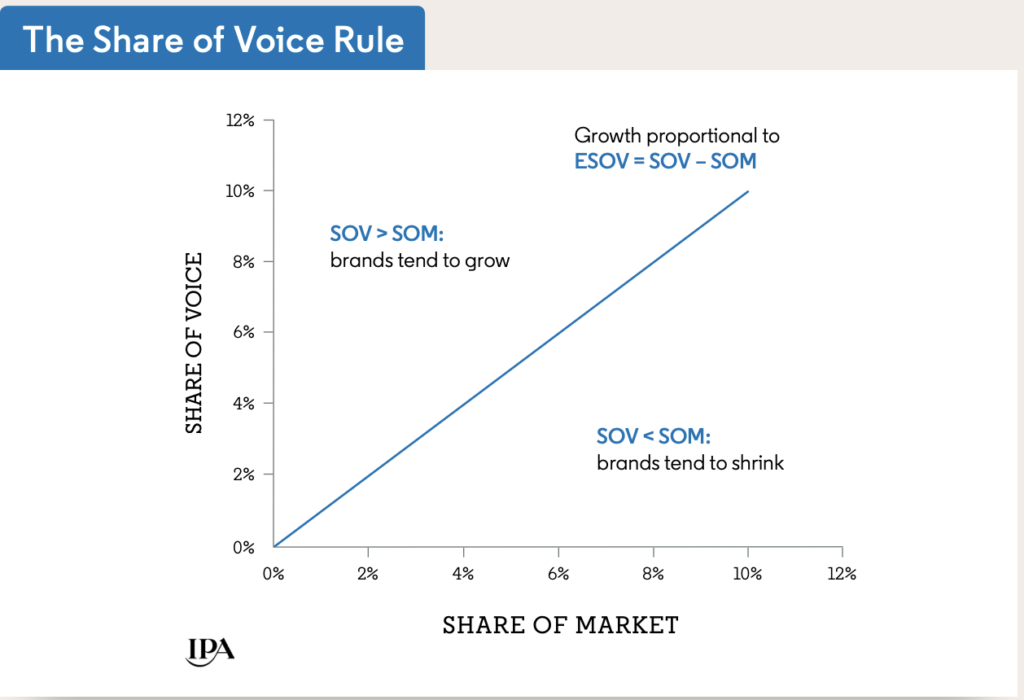To paraphrase the notorious Scott Galloway, investing in brand marketing is like going to the gym. It can be painful (expensive), take a long time to see results, and requires consistency and dedication. Add in the short time that most marketers are given to prove ROI and it’s easy to see why many brands put so much of their efforts around product and conversion marketing. It’s much easier to point to a Return on Ad Spend metric when asked how an initiative is impacting the business than to talk about brand favorability, brand preference, or NPS scores when the next question is sure to be “That’s great, but how do we know that our investment in our brand marketing is impacting the numbers?”
One of the most in-depth and often cited pieces of research in recent years is The Long and the Short of It: Balancing Short and Long-Term Marketing Strategies from Peter Fields and Les Binet. Through a comprehensive analysis of close to 1000 case studies, from over 700 brands in 83 categories, their findings start with the clear definition of different types of marketing – sales activation and brand building. Both of these initiatives are cogs in the machine working together to influence the range of people from long-term prospects to customers ready to make a decision. And the power of brand building and sales activation efforts have a compound effect.
In their research, building brand is shown to have the impact over long-term growth with broad but long-term, enduring effects, while sales activation has shorter-term, smaller returns during campaign durations. But it’s the combination of both that maximizes effectiveness.
The data around marketing effectiveness is interesting but it really is a story about human behavior. Our rational, practical selves responding to the immediacy often found in activation campaigns while our subconscious, emotional selves are slowly influenced by repeated, long-term exposure to brand messages.
what’s the right balance between brand building and activation marketing?
In The 5 Principles Of Growth In B2B Marketing, from LinkedIn, across B2B and B2C categories, they look at share of voice and it’s impact on market share. They find that a 10% increase in share of voice can lead to +0.6% market share increase for B2C and +0.7% in B2B.
In Binet and Fields research, for maximum effectiveness, long-term brand building efforts vs. short-term activations in the B2C space should have a 60/40 budget split. In the B2B space that split should be closer to 46/54 respectively. B2B brands that invest at least 46% of their budget in long-term brand building deliver the best financial returns in terms of market share growth, profitability and revenue.
While these numbers aren’t gospel, they provide a solid, research-based foundation to look at your budget allocation to determine if your ratios are way off or close.
Why Invest So Much In Brand building?
While the research shows the tangible aspects of investing in brand, there are the associations and intangible elements that also are benefits of building strong brands. These include:
- Reduce price sensitivity
- Drive familiarity and mindshare
- Set your brand up for potential network effects
- Develop stronger bonds with customers
- Amplifies performance at the go-to-market level
- Primes future sales
- Strengthen talent acquisition potential
- Take advantage of opportunities for brand elasticity
what does it all mean?
There is no single recipe for brand growth. A brand has to be relevant, have clear differentiation in people’s minds or reflexive recall, and be sustainable as behavior, markets, and needs evolve. But what is apparent is that consistent brand advertising improves consideration performance.
So keep these three things top of mind as you tend to your brand:
- Commit to long-term brand building marketing even though the returns may not be immediate
- Combine rational and emotional messaging for different objectives
- Invest enough in awareness to capture share of voice, leading to first-to-mind recall
Want even more details about investing in your brand? Reach out to us!

